JAXA has finally gotten around to releasing video of astronaut Takao Doi's successful space boomerang toss conducted inside the International Space Station's Harmony Module in March. (Watch it.)
Kaibo Zonshinzu anatomy scrolls (1819)
The Kaibo Zonshinzu anatomy scrolls, painted in 1819 by Kyoto-area physician Yasukazu Minagaki (1784-1825), consist of beautifully realistic, if not gruesome, depictions of scientific human dissection.
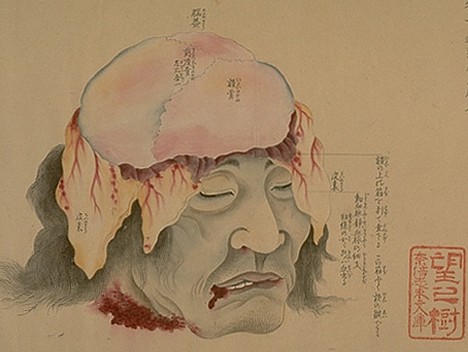
Unlike European anatomical drawings of the time, which tended to depict the corpse as a living thing devoid of pain (and often in some sort of Greek pose), these realistic illustrations show blood and other fluids leaking from subjects with ghastly facial expressions.
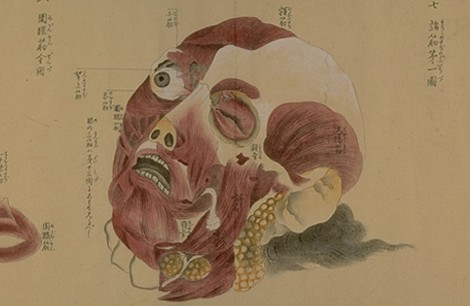
The fact that the bodies used in scientific autopsies in Edo-period Japan generally belonged to heinous criminals executed by decapitation adds to the grisly nature of the illustrations.
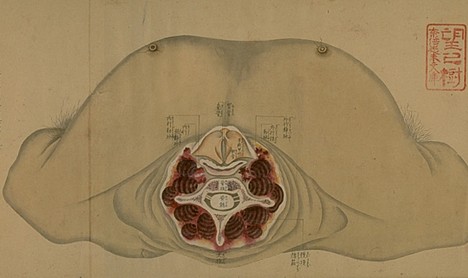
According to the Keio University Library (where these documents are currently stored), the two scrolls contain 83 illustrations based on Minagaki's observations of over 40 bodies. They are regarded as the best collection of early 19th-century anatomical drawings by a Japanese hand.
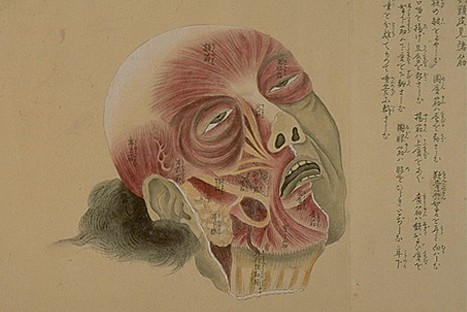
The first scroll includes a handwritten compliment by Philip von Siebold, the German physician credited with being the first European to teach Western medicine in Japan, who was reportedly impressed by the quality of the drawings when he observed them in 1826.
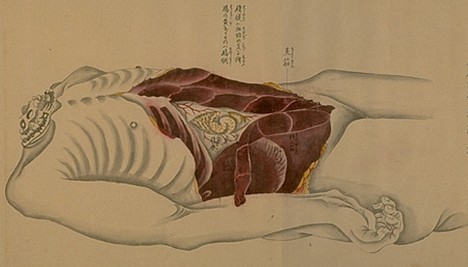
Siebold's note, in Dutch, reads: "This anatomical research has been carried out with great diligence and should therefore achieve great recognition."
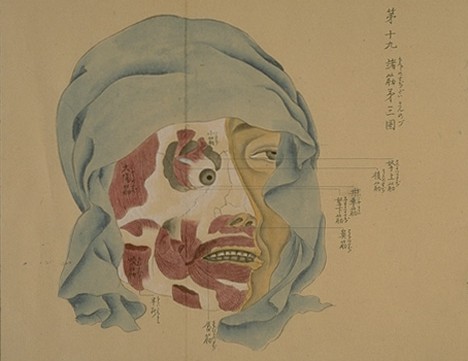
In 2003, Japan's Ministry of Culture designated Kaibo Zonshinzu an important cultural property, saying that the scrolls, which were produced as a result of actual observation and based on Dutch scholarship, demonstrate the level of knowledge that medical science reached in the Edo period.
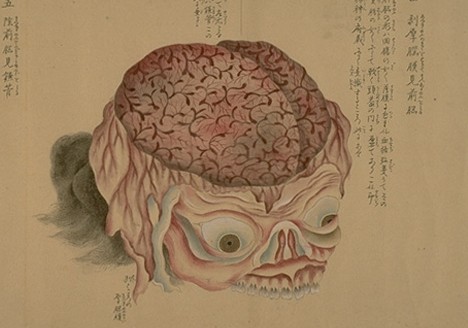
[Link: Kaibo Zonshinzu via Ectoplasmosis >> Morbid Anatomy >> Bibliodyssey]
80-year-old Gakutensoku robot revived (w/video)
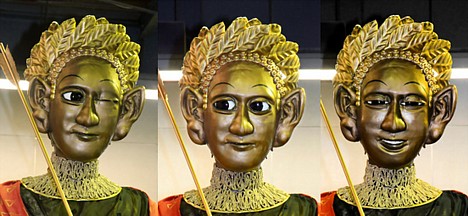
Asia's oldest "modern" robot, an 80-year-old golden-skinned humanoid from Osaka, has been brought back to life thanks to a project organized by the Osaka Science Museum. Gakutensoku, a 3.2 meter (10 ft 6 in) tall automaton powered by compressed air, can tilt its head, move its eyes, smile, and puff up its cheeks and chest as instructed -- just as the original did 80 years ago -- thanks to a 20-million-yen ($200,000) computer-controlled pneumatic servo system that replicates the movement of the original system of inflatable rubber tubes. (Watch the video.)
Built in 1928 by biologist Makoto Nishimura, Gakutensoku was first exhibited in Kyoto as part of the formal celebration of the Showa Emperor's ascension to the throne. The robot traveled to a number of expos and wowed onlookers with its mad calligraphy skills before going missing in Germany. Now, decades later, Gakutensoku (or at least a modern version of it) is finally coming home to Osaka.
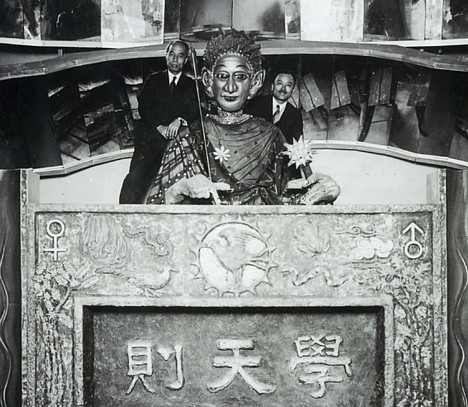
The reanimated Gakutensoku will star as the main attraction at the newly renovated Osaka Science Museum beginning July 18.
[Source: Asahi]
NTT Firmo transmits data through skin
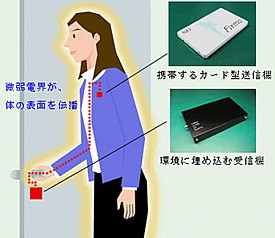 NTT has begun selling a device that transmits data across the surface of the human body and lets users communicate with electronic devices simply by touching them, the company announced on April 23.
NTT has begun selling a device that transmits data across the surface of the human body and lets users communicate with electronic devices simply by touching them, the company announced on April 23.
The new product, called "Firmo," consists of a card-sized transmitter carried in the user's pocket. The card converts stored data into a weak AC electric field that extends across the body, and when the user touches a device or object embedded with a compatible receiver, the electric field is converted back into a data signal that can be read by the device. For now, Firmo transfers data at 230kbps, but NTT is reportedly working on a low-cost 10Mbps version that can handle audio/video data transfers.
Firmo is based on NTT's RedTacton human area network (HAN) technology, which is designed to allow convenient human-machine data exchange through natural physical contact -- even through clothing, gloves and shoes.
NTT initially hopes this human area network technology will appeal to organizations looking to boost convenience and security in the office. Obvious applications include secure entrances and keyless cabinets that recognize employees when they touch the door handle (thus bypassing the need for card-swipers and keys), or secure printers that operate only when you touch them.
For now, a set of 5 card transmitters and 1 receiver goes for around 800,000 yen ($8,000), but NTT expects the price to come down when mass production begins.
[Source: RBB Today]
Video: WABOT-2 android plays keyboard (1985)
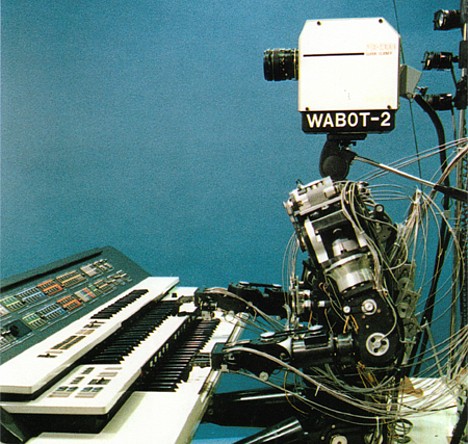
WABOT-2, an intelligent humanoid keyboard player developed by Waseda University in the 1980s, was considered the most advanced robot of its time. In addition to camera eyes that could read musical notation and deft hands that could tap out tunes of average difficulty, WABOT-2 could listen to accompanying singers and adjust its tempo, as well as carry on basic conversation. The android demonstrated its musical skills at Expo '85 in Tsukuba, Japan with a performance of Kitaro's new age classic "Silk Road." (Watch a clip.)
Built in order to develop the basic technology, strength and skills for robots of the 21st century, WABOT-2 was equipped with a hierarchical system of 80 microprocessors modeled after the human nervous system, and its arms and legs had 50 degrees of freedom -- more than any other robot in existence at the time. Waseda University regards WABOT-2 as a landmark achievement in the evolution of personal robots.
[Video: The Computer Chronicles (1985 broadcast) - Parts 1, 2, 3]
Kage-e: Shadow pictures
Kage-e ("shadow pictures") -- a popular form of Edo-period woodblock print -- were appreciated by children and adults and commonly used as party gags. These pictures consist of two parts: a "shadow" image and a "real" image. The shadow image, which typically bears the shape of a common, easily identifiable object, is viewed first. The real image, viewed second, reveals the surprising true identity of the shadow.
Here's a nice example by ukiyoe master Kuniyoshi (ca. 1852). It shows what appear to be the silhouettes of goldfish...
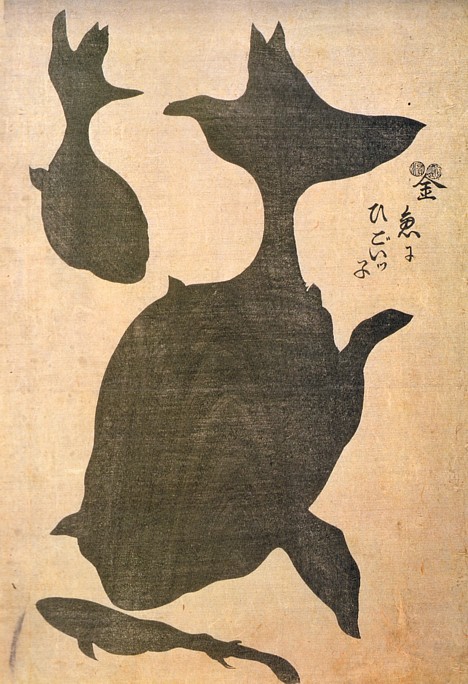
But look again...
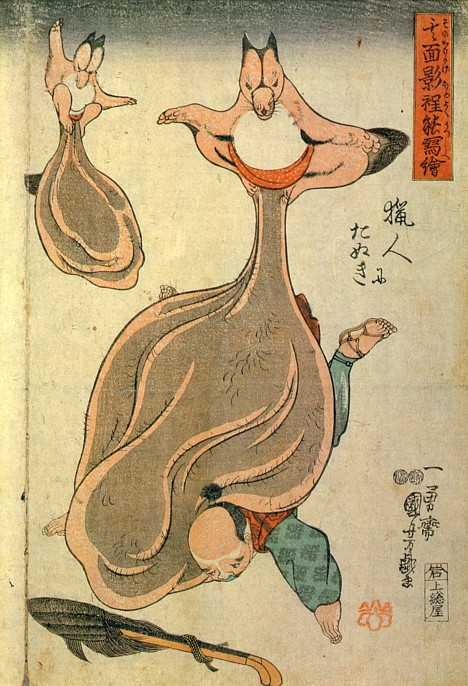
It's a flying tanuki crushing a hunter under the weight of its mammoth testicles.
Here are a few more kage-e by Hiroshige (ca. 1842). The shadows cast on shoji doors belong to men in interesting poses.
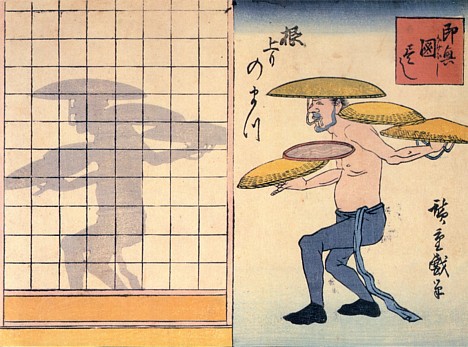
Pine tree
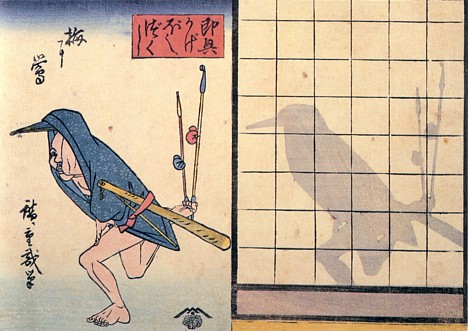
Uguisu (Japanese bush warbler) on a plum branch
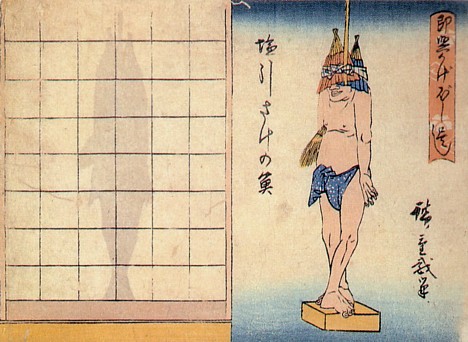
Salt-dried fish
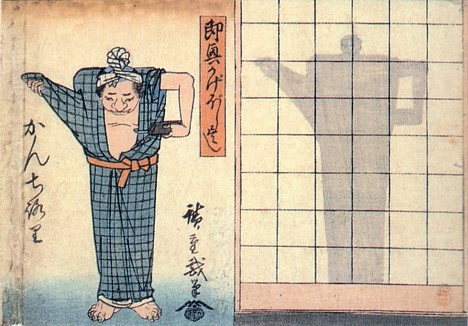
Kettle
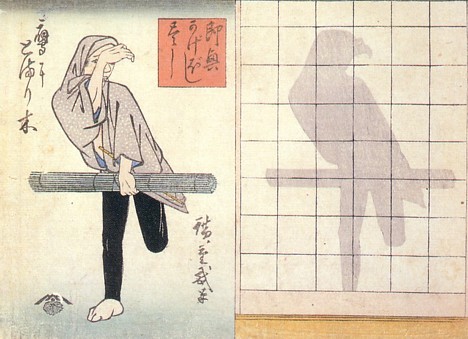
Hawk
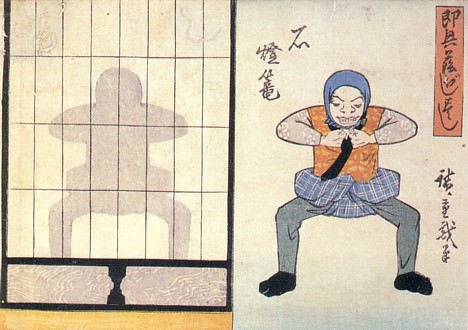
Stone lantern
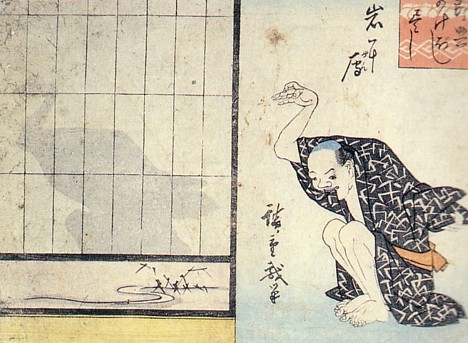
Goose on a rock
[Related: Joge-e: Two-way pictures]
Japan’s cyborg research enters the skull
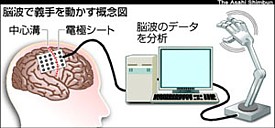 Researchers at Osaka University are stepping up efforts to develop robotic body parts controlled by thought, by placing electrode sheets directly on the surface of the brain. Led by Osaka University Medical School neurosurgery professor Toshiki Yoshimine, the research marks Japan's first foray into invasive (i.e. requiring open-skull surgery) brain-machine interface research on human test subjects. The aim of the research is to develop real-time mind-controlled robotic limbs for the disabled, according to an announcement made at an April 16 symposium in Aichi prefecture.
Researchers at Osaka University are stepping up efforts to develop robotic body parts controlled by thought, by placing electrode sheets directly on the surface of the brain. Led by Osaka University Medical School neurosurgery professor Toshiki Yoshimine, the research marks Japan's first foray into invasive (i.e. requiring open-skull surgery) brain-machine interface research on human test subjects. The aim of the research is to develop real-time mind-controlled robotic limbs for the disabled, according to an announcement made at an April 16 symposium in Aichi prefecture.
Although brain waves can be measured from outside the scalp, a stronger, more accurate signal can be obtained by placing sensors directly on the brain -- but that requires open-skull surgery, making it more difficult to recruit volunteer test subjects.
The researchers, who have filed a license application with the Osaka University Hospital ethics board, are working to enlist willing subjects already scheduled to have brain electrodes implanted for the purpose of monitoring epilepsy or other conditions. The procedure, which does not involve puncturing the cortex, places an electrode sheet at the central sulcus, a fold across the center of the brain near the primary motor cortex (which is responsible for planning and executing movements).
To date, the researchers have worked with four test subjects to record brain wave activity generated as they move their arms, elbows and fingers. Working with Advanced Telecommunications Research Institute International (ATR), the researchers have developed a method for analyzing the brain waves to determine the subject's intended activity to an accuracy of greater than 80%. The next step is to use the data to control robot arms developed by the University of Tokyo's Department of Precision Engineering.
[Source: Asahi]
Bento lunches decorated as album covers
Food hackers at Obacchi Jacket Lunch Box cut and arrange ordinary bento lunch box ingredients to recreate famous album covers.
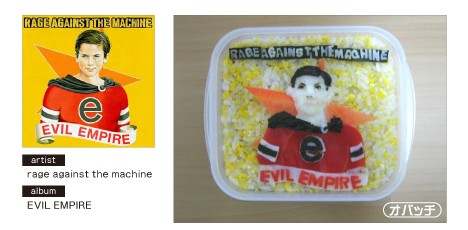
Rage Against The Machine - Evil Empire: Egg, paprika, nori (seaweed sheet), kamaboko (fish sausage), carrot, potato, ham, black sesame, rice
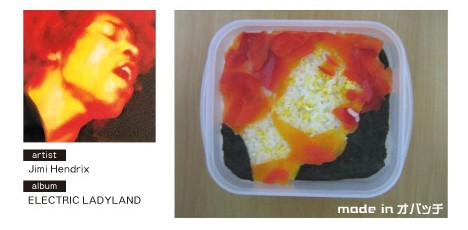
Jimi Hendrix - Electric Ladyland: Nori, paprika (red & orange), egg, rice
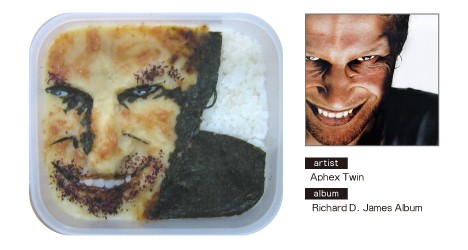
Aphex Twin - Richard D. James Album: Potato, umeboshi (pickled plum), fish/vegetable flakes, nori, kamaboko, rice

KISS - Destroyer: Egg, nori, ume (Japanese plum), kamaboko, rice
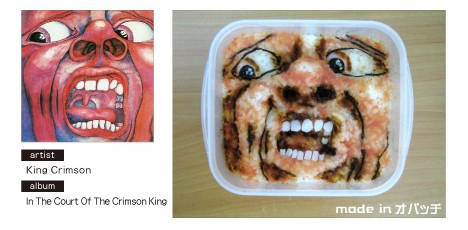
King Crimson - In The Court Of The Crimson King: Mentaiko (cod roe), kamaboko, ham, nori, rice

Weezer - Green Album: Cabbage, nori, ham, kamaboko, paprika, rice
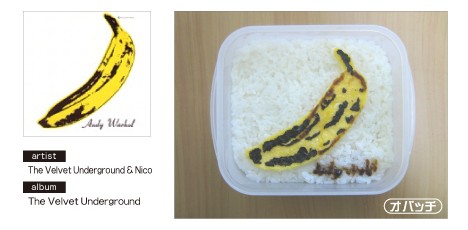
The Velvet Underground & Nico - The Velvet Underground: Nori, egg, rice
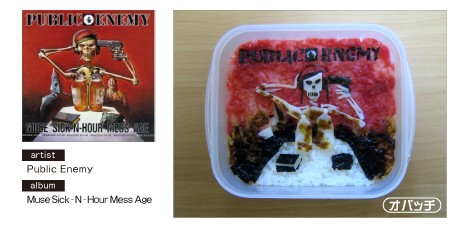
Public Enemy - Muse Sick-N-Hour Mess Age: Nori, kamaboko, umeboshi, rice
See more than 25 pages of these bentos at Obacchi Jacket Lunch Box (use the "Next" link at the bottom of each page to scroll through the site).
[Via: Zaeega]
Mona Lisa mutants & alien art by Naoto Hattori
Surreal artist Naoto Hattori's huge monster painting collection includes a smattering of Mona Lisa mutants. Visit his gallery for more madness.
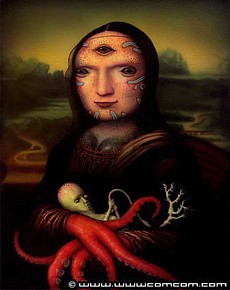
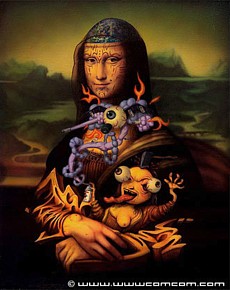
Maternity, Bombing

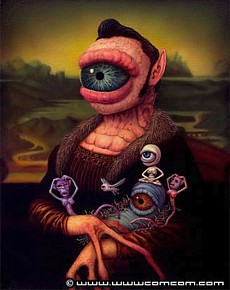
Fabrication, Watcher
[Link: Naoto Hattori]
